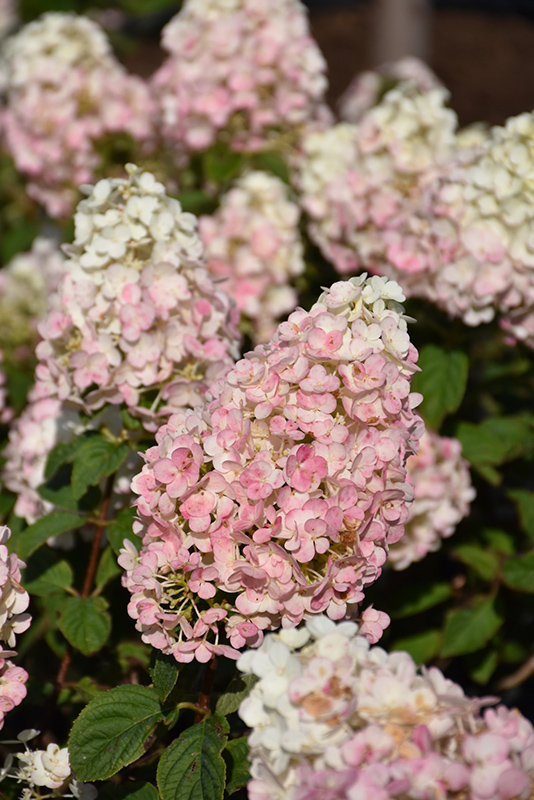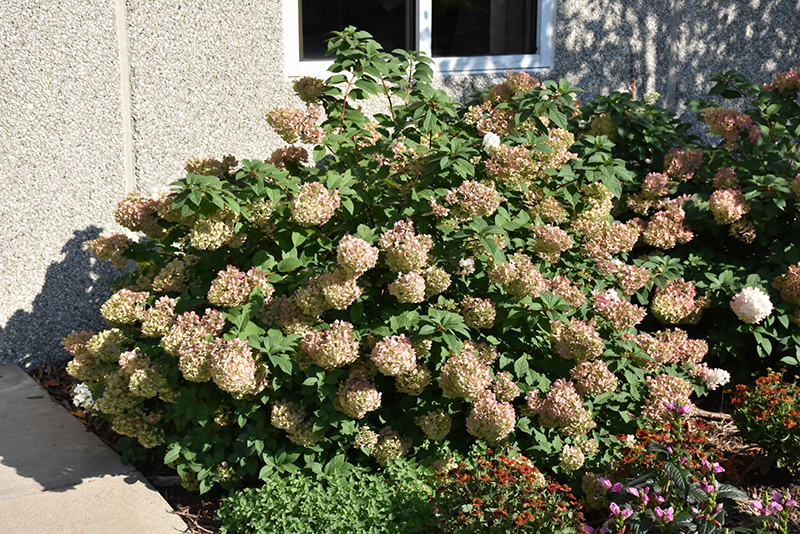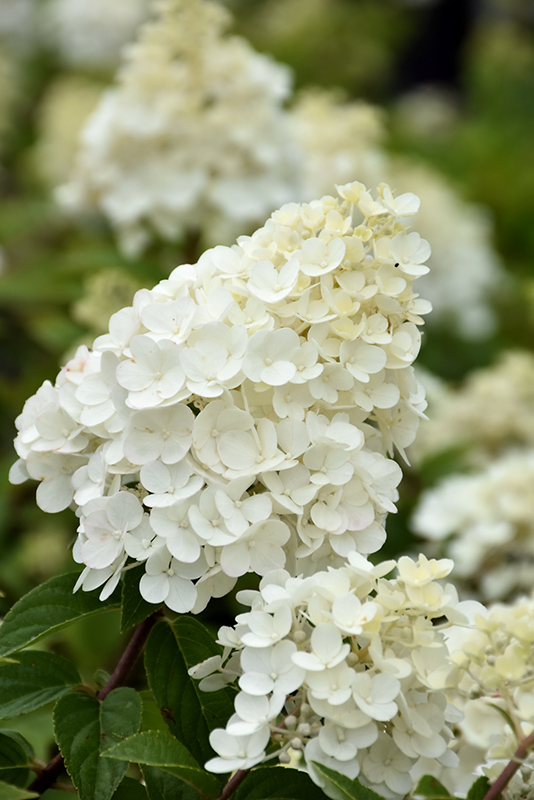Hydrangea, Strawberry Sundae Hydrangea paniculata 'Rensun' Height: 5 feet Spread: 4 feet
Sunlight:
Hardiness Zone: 3b Brand: First Editions Description: A compact variety featuring large conical flower heads that emerge white, changes to pink, and then finally matures to strawberry red; great for smaller spaces and containers Ornamental Features Hydrangea, Strawberry Sundae features bold conical white flowers with pink overtones at the ends of the branches from early summer to early fall. The flowers are excellent for cutting. It has green deciduous foliage. The pointy leaves do not develop any appreciable fall color. Landscape Attributes Hydrangea, Strawberry Sundae is a multi-stemmed deciduous shrub with an upright spreading habit of growth. Its relatively coarse texture can be used to stand it apart from other landscape plants with finer foliage. This shrub will require occasional maintenance and upkeep, and is best pruned in late winter once the threat of extreme cold has passed. It has no significant negative characteristics. Hydrangea, Strawberry Sundae is recommended for the following landscape applications; Planting & Growing Hydrangea, Strawberry Sundae will grow to be about 5 feet tall at maturity, with a spread of 4 feet. It tends to be a little leggy, with a typical clearance of 2 feet from the ground, and is suitable for planting under power lines. It grows at a medium rate, and under ideal conditions can be expected to live for 40 years or more. This shrub does best in full sun to partial shade. It prefers to grow in average to moist conditions, and shouldn't be allowed to dry out. This plant should be periodically fertilized throughout the active growing season with a specially-formulated acidic fertilizer. It is not particular as to soil type or pH. It is highly tolerant of urban pollution and will even thrive in inner city environments. Consider applying a thick mulch around the root zone in winter to protect it in exposed locations or colder microclimates. This is a selected variety of a species not originally from North America.![]()
![]()
![]()
![]()
![]()
![]()
![]()
![]()
![]()
![]()



